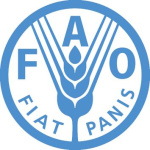- Industria: Agriculture
- Number of terms: 87409
- Number of blossaries: 0
- Company Profile:
Established in October 1945 with the objective of eliminating hunger and improving nutrition and standards of living by increasing agricultural productivity, FAO coordinates the efforts of governments and technical agencies in programs for developing agriculture, forestry, fisheries, and land and ...
A class of endonucleases that cleaves DNA after recognizing a specific sequence, e.g., <i>Bam</i>H1 (5´GGATCC3´), <i>Eco</i>RI (5´GAATTC3´), and <i>Hin</i>dIII (5´AAGCTT3´). There are three types of restriction endonuclease enzymes:
Type I: Cuts non-specifically a distance greater than 1000 bp from its recognition sequence and contains both restriction and methylation activities.
Type II: Cuts at or near a short, and often palindromic (q.v.) , recognition sequence. A separate enzyme methylates the same recognition sequence. They may make the cuts in the two DNA strands exactly opposite one another and generate blunt ends, or they may make staggered cuts to generate sticky ends. The type II restriction enzymes are the ones commonly exploited in recombinant DNA technology.
Type III: Cuts 24-26 bp downstream from a short, asymmetrical recognition sequence. Requires ATP and contains both restriction and methylation activities.
Industry:Biotechnology
A class of enzymes that degrade DNA or RNA molecules by cleaving the phospho-diester bonds that link adjacent nucleotides. In deoxyribonuclease (DNase), the substrate is DNA. In endonuclease, it cleaves at internal sites in the substrate molecule. Exonuclease progressively cleaves from the end of the substrate molecule. In ribonuclease (RNase), the substrate is RNA. In the S1 nuclease, the substrate is single-stranded DNA or RNA. Nucleases have varying degrees of base-sequence specificity, the most specific being the restriction endonucleases.
Industry:Biotechnology
A class of eukaryotic RNA viruses that can form double-stranded DNA copies of their genomes by using reverse transcription; the double-stranded forms integrate into chromosomes of an infected cell. Many naturally occurring cancers of vertebrate animals are caused by retroviruses. Also, the AIDS virus is a retrovirus.
Industry:Biotechnology
A class of large conjugative plasmids found in the soil bacterium <i>Agrobacterium rhizogenes</i>. Ri plasmids are responsible for hairy root disease of certain plants. A segment of the Ri plasmid is found in the genome of tumour tissue from plants with hairy root disease.
Industry:Biotechnology
A class of lipid molecules in which a phosphate group is linked to glycerol and two fatty acyl groups. A major component of biological membranes.
Industry:Biotechnology
A class of natural and synthetic compounds that inhibit the growth of or kill some micro-organisms. Antibiotics such as penicillin are often used to control (to some extent kill) contaminating organisms. However, resistance to particular antibiotics can be acquired through mutations. Some contaminating organisms are only suppressed or their metabolism slowed to an insignificant level.
Industry:Biotechnology
A class of nucleases that degrades DNA or RNA, starting from an end either 5´ or 3´.
Industry:Biotechnology
A class of positively charged polycyclic molecules that intercalate into DNA and induce frameshift mutations.
Industry:Biotechnology
A class of slender, unsegmented worms, often parasitic. a.k.a. eelworms, especially when phytoparasitic.
Industry:Biotechnology
A classification scheme indicating which plasmids can co-exist within a single cell. Plasmids must belong to different incompatibility groups to co-exist within the same cell. Plasmids that belong to the same incompatibility group are unstable when placed in the same cell. A plasmid cloning vector should always belong to an incompatibility group different from that of the host bacterium's endogenous plasmids.
Industry:Biotechnology
